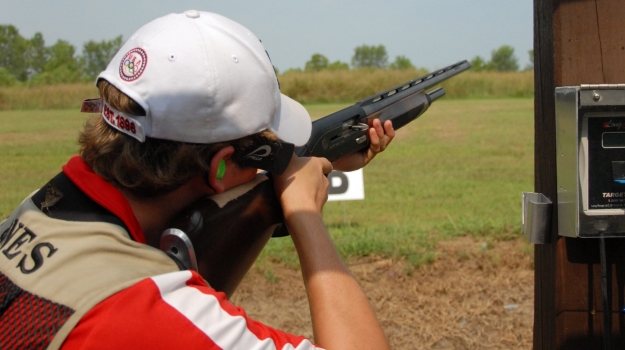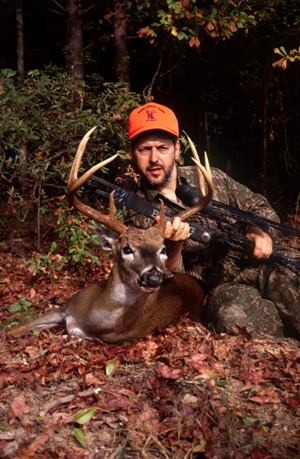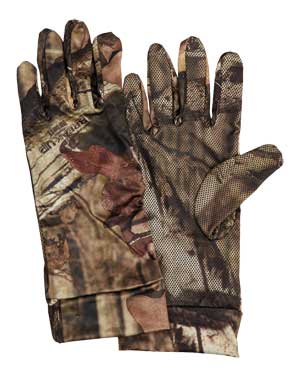
Editor’s Note: Allen Treadwell from Seligman, Missouri, was a world champion in the international skeet shooting discipline and was on the Olympic team as a shotgun shooter. He was first sponsored by Bass Pro Shops as an Olympic shotgun shooter, then on the Bass Pro Shops’ professional hunting team and the company’s “King of Bucks” TV show. He’s also been featured on the “Winchester Rack Masters” TV show. His main focus is white-tailed deer. Treadwell says, “I wear Mossy Oak on both shows, but I’d wear Mossy Oak even if I wasn’t on television. I believe in the Mossy Oak patterns, and I know they help me take more deer. But more importantly, I believe in the Mossy Oak philosophy of family, fraternity, conservation and passing on our outdoor heritage. I like that Mossy Oak has more than one pattern. When I’m deer hunting, I like to wear Mossy Oak Break-Up Infinity. When I’m turkey hunting, most of the time, I wear Obsession. Both of these patterns are open patterns that blend in with the terrain where I hunt. In early deer season, when there's still a lot of green in the woods, I wear Obsession rather than the Break-Up Infinity.”
I'm often asked, “How does someone become a professional hunter like you?” I can’t speak for other professional hunters. The way I got on with Bass Pro Shops, eventually working with two of their shows, and being on their Pro Staff was through competitive and Olympic shotgun shooting. The second thing someone generally asks me is, “How does competitive shooting relate to being a professional deer hunter?” The answer is quite simple. To be a competitor, you need to have a strong work ethic and be extremely self-disciplined. When other people are out having a good time, a true competitor will use that time to hone his craft. To reach the highest level in any sport, you have to be willing to work harder, pay more attention to detail, really focus on your craft and do all the little things most other competitors don’t do. These same skills and disciplines are required to be a successful hunter and take older-age-class bucks that most hunters never see. In the summer, while other hunters are watching TV and sitting in the air conditioning, I try to learn all I can about the properties I want to hunt in the fall. I learn all I can about the deer that live on those properties, what size deer I can expect to take, and where those bucks are most likely to show up during daylight hours.
 Another aspect of competitive shooting and successful deer hunting that’s similar is being able to read your competitors. When I'm at a match, I don’t just think about how I’ll shoot, or what I need to do to shoot well. I watch the other competitors to see what causes them to shoot poorly. So, regardless of where you're hunting, you have two competitors you need to study. One is the deer, since you’re competing with those older-age-class bucks to see if you can find them before they discover you. You're also competing with other hunters who are trying to take the same buck you're hoping to take. Therefore if you can learn more about the deer than the deer learns about you, and if you can learn more about the other hunters than they learn about you, you can swing the odds for being successful over to your side of the competition.
Another aspect of competitive shooting and successful deer hunting that’s similar is being able to read your competitors. When I'm at a match, I don’t just think about how I’ll shoot, or what I need to do to shoot well. I watch the other competitors to see what causes them to shoot poorly. So, regardless of where you're hunting, you have two competitors you need to study. One is the deer, since you’re competing with those older-age-class bucks to see if you can find them before they discover you. You're also competing with other hunters who are trying to take the same buck you're hoping to take. Therefore if you can learn more about the deer than the deer learns about you, and if you can learn more about the other hunters than they learn about you, you can swing the odds for being successful over to your side of the competition.
Another advantage that I have is I'm at home with a shotgun. I like to take my slug gun with me from time-to-time, and I don’t hesitate to take a shot on a moving deer. I’ve learned to shoot moving targets from competing in shotgun competitions. So, when I have to swing on a deer that’s moving, I'm extremely confident that I can put the slug where it will bring the buck down quickly.
When I was young, my dad used to tell me, “A man has to know his limitations.” It’s just as important to know when not to take the shot as knowing when to take the shot. However, if I'm 100-percent confident on taking a shot on a moving deer, I don’t hesitate. Many of the other hunters may be hoping and praying that the big buck will stop and present the shot, but oftentimes he doesn’t.
I've been an Olympic alternate and a world champion shotgun shooter. Reaching those heights in my chosen sport gave me a great deal of confidence and fine tuned my shooting skills. When I combined my shooting skills with my knowledge of deer hunting and my work ethic, I was confident that I had the ingredients to become a professional hunter. As in sports, when preparation and dedication met up with opportunity, I was able to reach my dream. I think one point that many deer hunters overlook is that the more you're prepared to take an older-age-class buck, and the more preparation and knowledge you get on where to take that buck during daylight hours, then the more successful you'll be.
When I started out my recreation was deer hunting. My profession was shooting international skeet. Today those two disciplines have traded places. Now, my profession is deer hunting, and my hobby is skeet shooting. When I reached a point that I had done about everything I wanted to do as a shotgunner, then, I focused all my attention on being in the deer woods. When I was competing, I never took a day off from training. Now that I'm a professional hunter, I never take a day off from learning to hunt deer.
So how do you get to be a professional hunter?
- prepare;
- learn all you can;
- learn as much about your competition (the other hunters) as you do about the deer you plan to hunt; and
- spend time in the woods learning the woods, and the deer that live there not only locally but in many other states.
Then when opportunity finds you, you're ready to be a professional hunter.
Start Scouting Now to Take Bigger Buck Deer This Fall
Allen Treadwell Gets the Edge on Taking Big Bucks Right Now






























